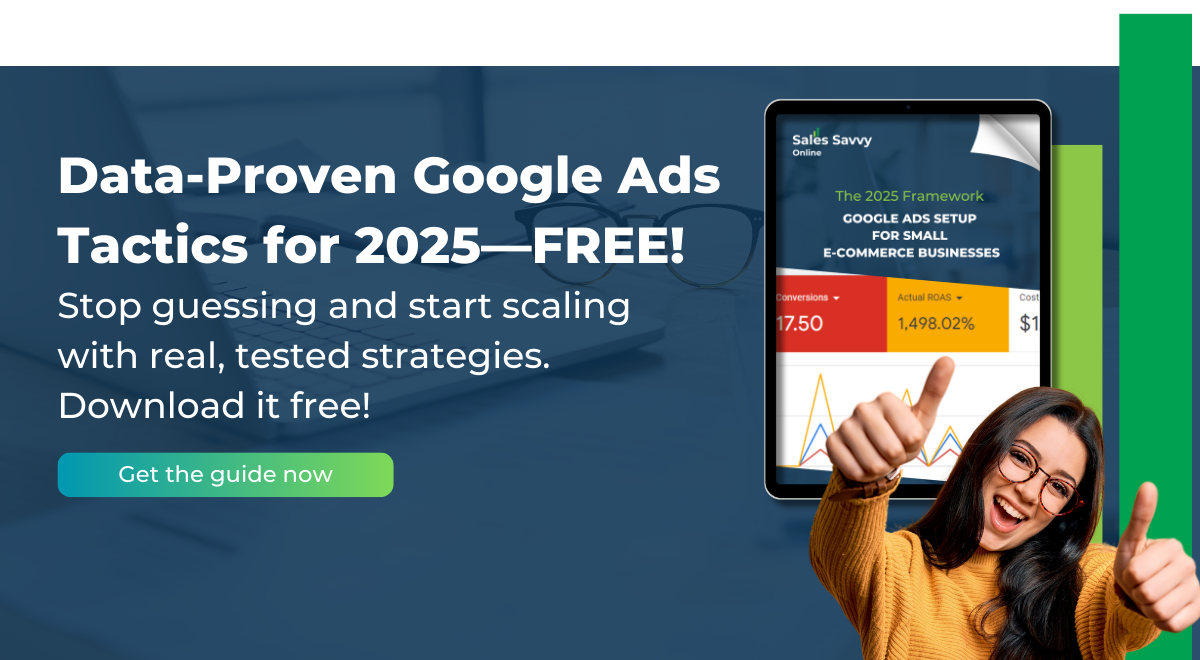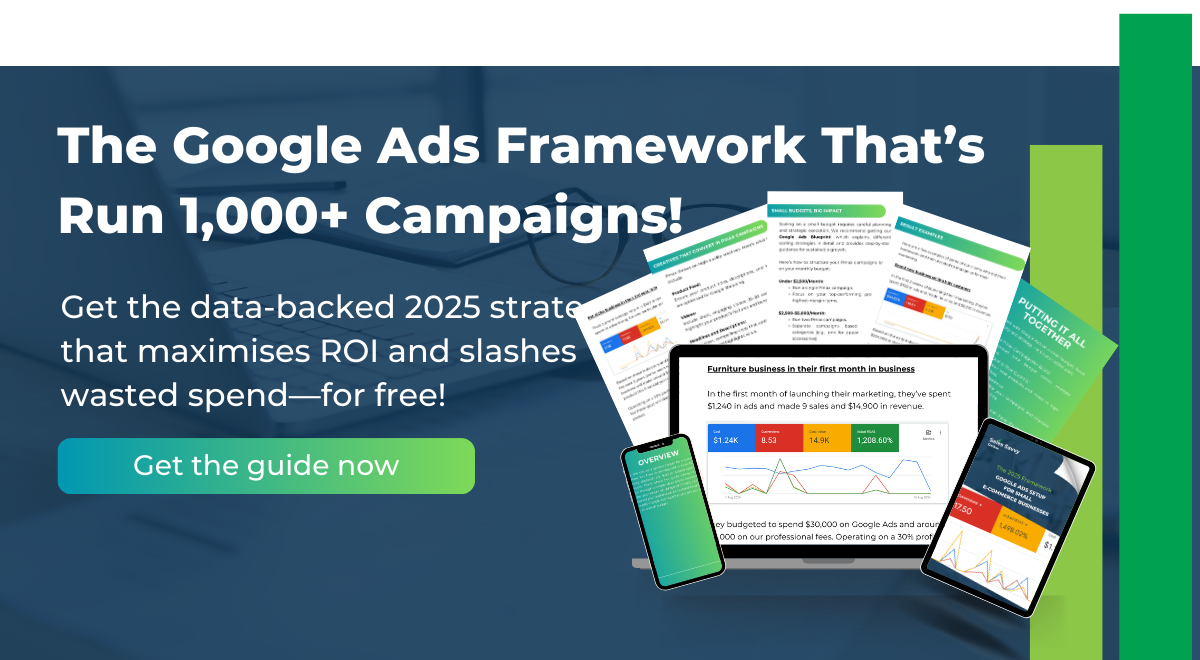Struggling to make your Google Ads campaigns profitable? You’re not alone. Many e-commerce entrepreneurs pour money into ads but see little return. The truth? Google Ads isn’t a ‘set and forget’ system—it’s a constant game of optimisation, testing, and strategic budget allocation. If you’re looking for expert guidance, a Google AdWords expert can help you refine your strategy, cut wasted spend, and maximise profitability.
If you’re ready to ditch the guesswork and start running profitable campaigns, this guide is for you. We’ll walk you through the key strategies that matter most—keyword research, compelling ad copy, conversion-focused landing pages, and smart bidding techniques—so you can start seeing real results.
Step 1: Set Clear Goals for Your Google Ads Campaigns
Before you spend a cent on Google Ads, you need a clear goal. Otherwise, you’re just burning cash. Your goals should be specific, measurable, and tied to business growth—not just vanity metrics like clicks.
Why Goals Matter
Without clear objectives, businesses waste money on campaigns that don’t move the needle. For example, a business focusing on brand awareness should run Display or YouTube Ads, while an e-commerce store aiming for direct sales should focus on Search and Shopping Ads. Aligning campaign type with business goals ensures maximum return on investment.
Align Goals With Business Objectives
Not all campaigns should aim for sales right away. Here’s how different objectives align with e-commerce growth:
- Brand awareness → Use Display & YouTube Ads to introduce your brand to new audiences.
- Lead generation → Capture emails through free guides, quizzes, or limited-time offers.
- Sales conversions → Use Search and Shopping Ads to target high-intent buyers.
- Customer retention → Run remarketing ads to past buyers to increase lifetime value.
Common Pitfalls When Setting Goals
- Focusing only on clicks: Clicks don’t always translate into conversions.
- Neglecting audience intent: Not all visitors are ready to buy—some need nurturing first.
- Failing to track KPIs: Without proper tracking, you can’t measure success.
Track the Right KPIs
Clicks don’t equal conversions. Here’s what really matters:
- Return on Ad Spend (ROAS) – The single most important metric. Are you making more than you’re spending?
- Conversion Rate (CVR) – Are people actually buying, or just browsing?
- Customer Acquisition Cost (CAC) – How much are you paying for each new customer?
- Click-Through Rate (CTR) – A high CTR means your ads are relevant; a low one means they need work.
- Impression Share – Measures how often your ads appear compared to the competition.
Step 2: Master Keyword Research (Beyond Just Search Volume)
Your Google Ads are only as good as the keywords you target. Here’s how to find, analyse, and choose the right ones.
1. Prioritise High-Intent Keywords
Not all keywords are created equal. You want buyer intent keywords—ones that signal people are ready to purchase.
✅ Good: “buy organic coffee beans” (high intent)
❌ Bad: “best coffee brands” (research intent)
2. Use Google’s Keyword Planner (But Don’t Stop There)
While Keyword Planner is great for research, go deeper with:
- Google’s Search Bar Auto-Suggest – Type in a keyword and see what people are actually searching for.
- Competitor Research – Tools like SEMrush or Ahrefs let you see what’s already working for competitors.
- Google Search Console Data – Find out which organic keywords are already driving traffic to your site.
- Google AdWords Management Services – Agencies with real-world data insights can help identify high-performing keywords you might not have considered.
3. Group Keywords by Buying Stage
- Top of Funnel (Awareness) → Broad searches like “how to improve skin hydration”
- Middle of Funnel (Consideration) → Comparison searches like “best hyaluronic acid serum”
- Bottom of Funnel (Purchase) → High-intent searches like “buy organic hyaluronic acid serum”
Step 3: Write Ad Copy That Converts (Not Just Gets Clicks)
If your ads aren’t converting, it’s usually because the messaging isn’t hitting the right pain points.
Formula for High-Converting Ad Copy:
[Pain Point] → [Solution] → [Urgency] → [Call to Action]
🚀 Struggling with dull, tired skin? Our organic serum hydrates in 24 hours. Limited-time 20% off! Shop now!
Pro Tips:
✅ Use numbers to build credibility (e.g., “12x ROAS,” “5,000+ happy customers”).
✅ Include urgency (e.g., “Limited stock,” “Offer ends soon”).
✅ Keep it short, direct, and focused on benefits.
Step 4: Advanced Bidding Strategies to Lower Costs
Google Ads bidding isn’t just about setting a budget and hoping for the best. Here’s how to optimise bids for better ROI.
1. Choose the Right Bidding Strategy
- Manual CPC → Ideal for control and data collection.
- Target ROAS → Automates bidding to achieve a set return.
- P Max → Uses AI to optimise for conversion value across platforms.
2. Adjust Bids Based on Performance
- Increase bids on high-performing keywords and devices.
- Decrease bids on low-converting search terms.
- Leverage geo-targeting to focus on locations with the highest ROI.
Step 5: Scale Your Campaigns for Maximum ROI
Once your campaigns are profitable, it’s time to scale up without losing efficiency.
1. Retargeting & Lookalike Audiences
- Remarket to past visitors to re-engage warm leads.
- Use lookalike audiences to find new customers similar to existing buyers.
2. Expand into New Ad Formats
- Try Video Ads to capture attention on YouTube.
- Use Shopping Ads to showcase product visuals.
3. Automate & Optimise
- Set up rule-based automation to adjust bids automatically.
- Use P Max campaigns to take advantage of machine learning.
Final Thoughts: Work with a Google Ads Marketing Agency for Faster Growth
A Google Ads marketing agency can help you scale faster with proven campaign structures, audience targeting, and P Max optimisation. If you’re tired of guessing and want a strategy that’s backed by data and experience, working with professionals can help you cut wasted spend and boost your ROAS.
Why Work with a Google AdWords Expert?
✅ They handle complex bidding strategies.
✅ They refine ad copy and landing pages for conversions.
✅ They continuously optimise based on data.
If you want more in-depth info about everything Google Ads for e-commerce, make sure to read our hand guide: “The Ultimate Guide to Google Ads Success For E-Commerce”



